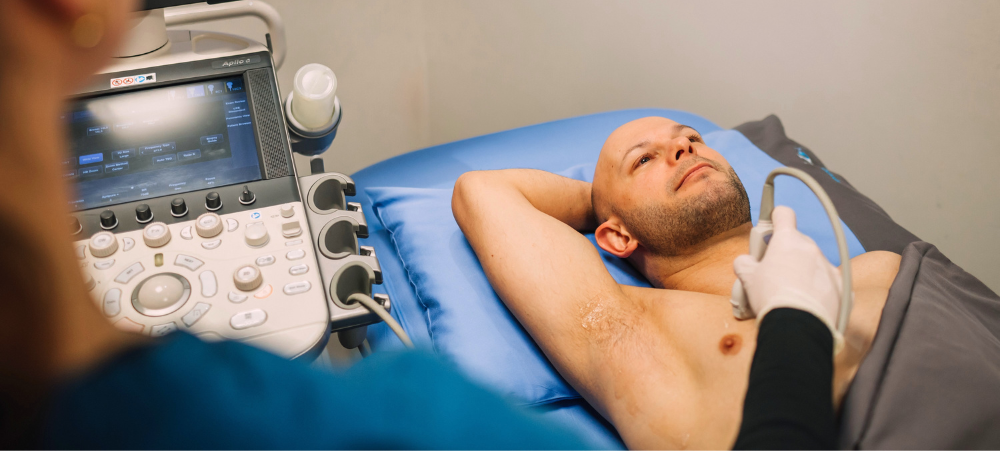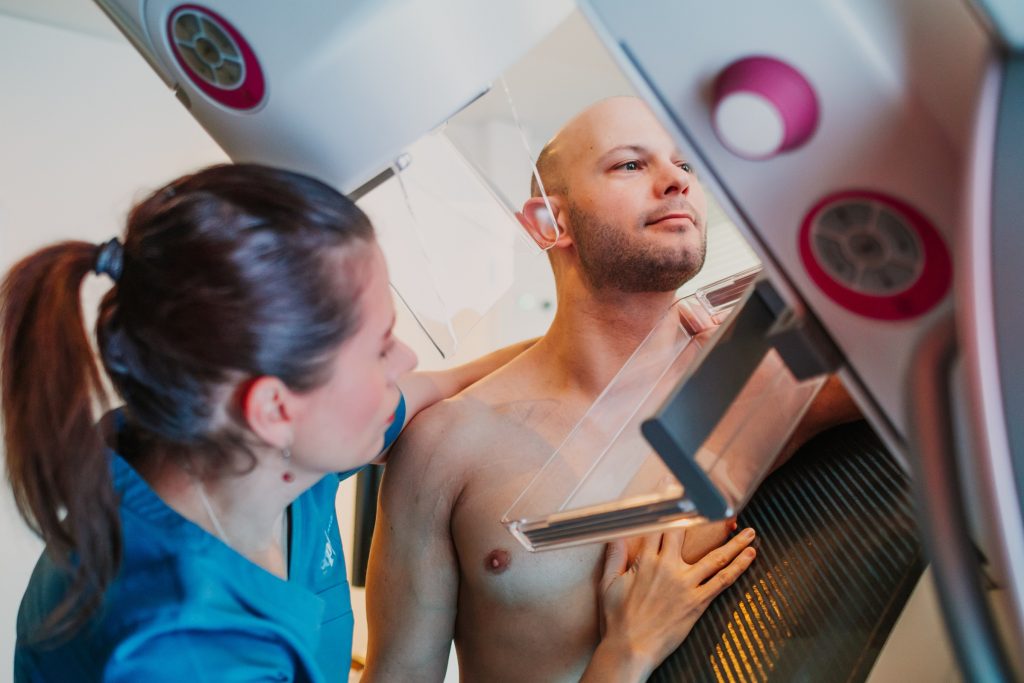Dr Salomine Theron, a radiologist at the SCP Radiology and Dr Lizanne Langenhoven, who specialises in the treatment of breast cancer, talk about breast cancer in men, how prevalent it is as well as the radiology behind the diagnosis, treatment and surveillance for recurrence.
‘It may come as a surprise that men can develop breast cancer,’ says Dr Langenhoven. ‘In fact, about 1% of all breast cancer cases are diagnosed in men. Unfortunately, men often present with more advanced disease, because they are not aware that they can develop breast cancer in the first place.’
Dr Theron says radiology plays a pivotal role in the diagnosis and treatment of breast cancer in both men and women. However, there is a difference in terms of radiology’s initial role in screening for breast cancer. ‘In women over 40, we recommend an annual mammography,’ she says. ‘In other words, looking for cancers which are asymptomatic. So even if there are no changes to your breast visibly or a lump, we still screen for anything that may develop into breast cancer or has already.
‘In men, that is not standard practice’ Here radiology is diagnostic and the referral is as a result of a lump in the breast, under the arm, there’s puckering or nipple pain. The mammogram differs too. It is a single mammogram image of each breast so that a comparison can be made. In men, it will also include breast ultrasound and evaluation of the lymph nodes under the armpit.
Dr Theron says, ‘the imaging of a lump may also be incidental. For example, when we do any form of CT imaging on the chest in a male, even when creating images of the lungs, we always look at the soft tissue in the breast area. If we see an asymmetric nodule with an irregular shape (almost like a star) we alert the patient’s healthcare provider, even though that wasn’t the reason for the CT scan’.
Is a breast lump always in men always cancer?
‘No,’ says Dr Langenhoven, ‘About 50% of males develop small lumps in each of their breasts during puberty, usually behind the nipples which can be tender. This is called gynecomastia – colloquially a ‘stony’ and it’s perfectly normal. It usually goes away as they finish puberty.
‘Breast cancer, on the other hand, usually presents as a firm nodule in one breast that is not tender. There are some men who present with inflammatory breast cancer, where the breast is red, swollen and tender. This is however, a rare but aggressive type of invasive breast cancer in which cancer cells block lymph vessels in the skin.’
She says, ‘the first message is one of awareness. Men can develop breast cancer. And that they should see their GP if they become aware of a lump in their breasts which feels firm and asymmetrical or if the breast becomes red, swollen and tender.’
The second message is one of precaution
Women and men can inherit the harmful BRCA1 or BRCA2 gene mutation that belong to a class of genes, known as tumour suppressors and have an increased risk of breast cancer.
Dr Langenhoven says, ‘I have a patient in my practice who presented with a hard lump on his left breast. Because he was aware of his family’s history of breast cancer, he went to his GP for an examination. A mammogram and biopsy confirmed the diagnosis of breast cancer.
She says men with these genes should always be assessed by a genetic counsellor. In addition, should you have a family member diagnosed with male breast cancer, prostate cancer below the age of fifty or ovarian cancer (women), you should seek the opinion of a genetic counsellor to discuss the possible genetic risk and the option of genetic testing. Prevention is better than cure.’
The role of radiology in diagnosis
‘A suspicious lump or mass can only be definitively diagnosed by a biopsy,’ says Dr Theron. She explains that there are three biopsy options:
- Ultrasound guided core biopsies, where a sample of tissue or blood is taken for testing by a pathologist and a marker is left in the lesion or lump where the sample was taken
- A fine needle aspiration (FNA) is a procedure to obtain a sample of cells from your body for testing by a cytologist for cancer cells usually of a lymph node or occasionally of a breast mass
- A vacuum-assisted biopsy can produce slightly larger samples of tissues which is sent to the pathology lab
- If there is no lump visible on ultrasound, only suspicious calcification on the mammogram, stereotactic guided vacuum biopsy will be done. Put simply, a mammogram will help us find the abnormality to biopsy
- If the lump is very small or has a cystic component, an ultrasound guided vacuum assisted biopsy will be performed
Radiology at every stage of cancer care
‘Radiology is integral to breast cancer management beyond diagnosis, providing critical information that guides clinical decisions at every stage of care,’ says Dr Theron. ‘This includes staging of the disease, it allows for precise treatment planning, guiding surgical procedures, effective monitoring of treatment responses, early detection of recurrence, all of which are essential for improving patient outcomes.’
Male breast cancer treatment
Men with breast cancer are treated exactly as their female counterparts. Based on the type of breast cancer and the extent (stage), treatment options include chemotherapy, hormone withdrawal therapy, targeted therapies, immunotherapy, surgery and radiotherapy.
‘Even though only one in a hundred diagnosed cases of breast cancer is men,’ says Dr Theron, ‘we still urge men and of course women to check themselves regularly and to see a doctor if they feel or see any changes in their breasts.’
Early detection can save your life.
We understand that there are many aspects that encompass a Mother, Father or Child and strive toward providing resources and services that accommodates this.
Our content is aimed to inform and educate families on issues starting from pregnancy through to the challenges of the teen-age years.
- Tiny Toons Looniversity Returns: Meet the Voice Behind Plucky and Hamton! - December 12, 2025
- From Pain to Possibility: Panado®’s New Marketing Campaign, Highlights The Joy Of Pain Relief - December 10, 2025
- Feeding Unicorns by Jeni-Anne Campbell: A bold new book for business leaders who care - December 9, 2025






